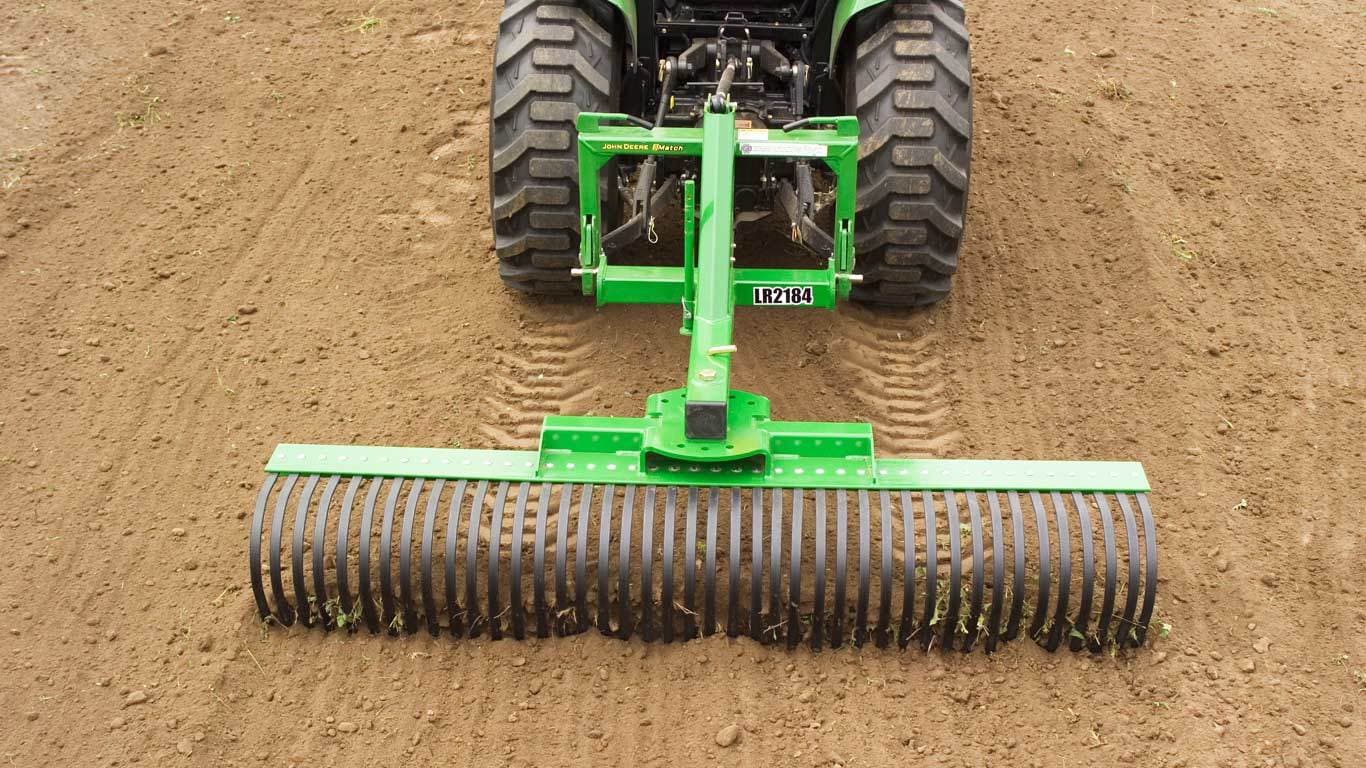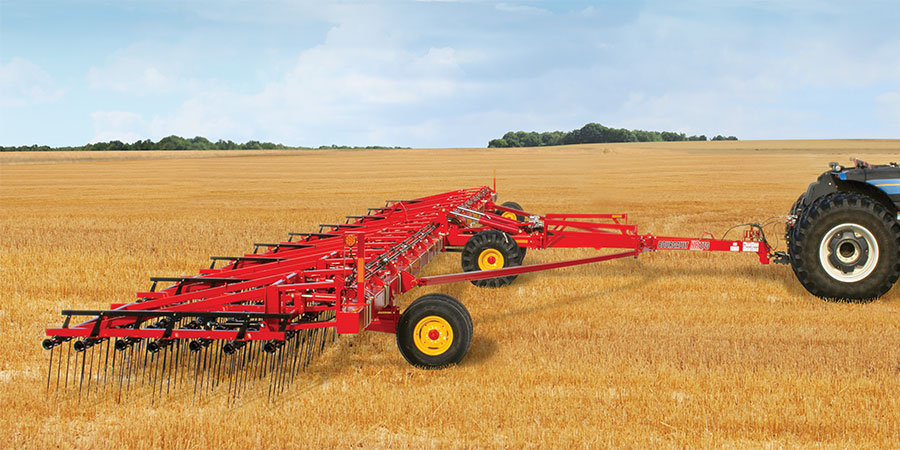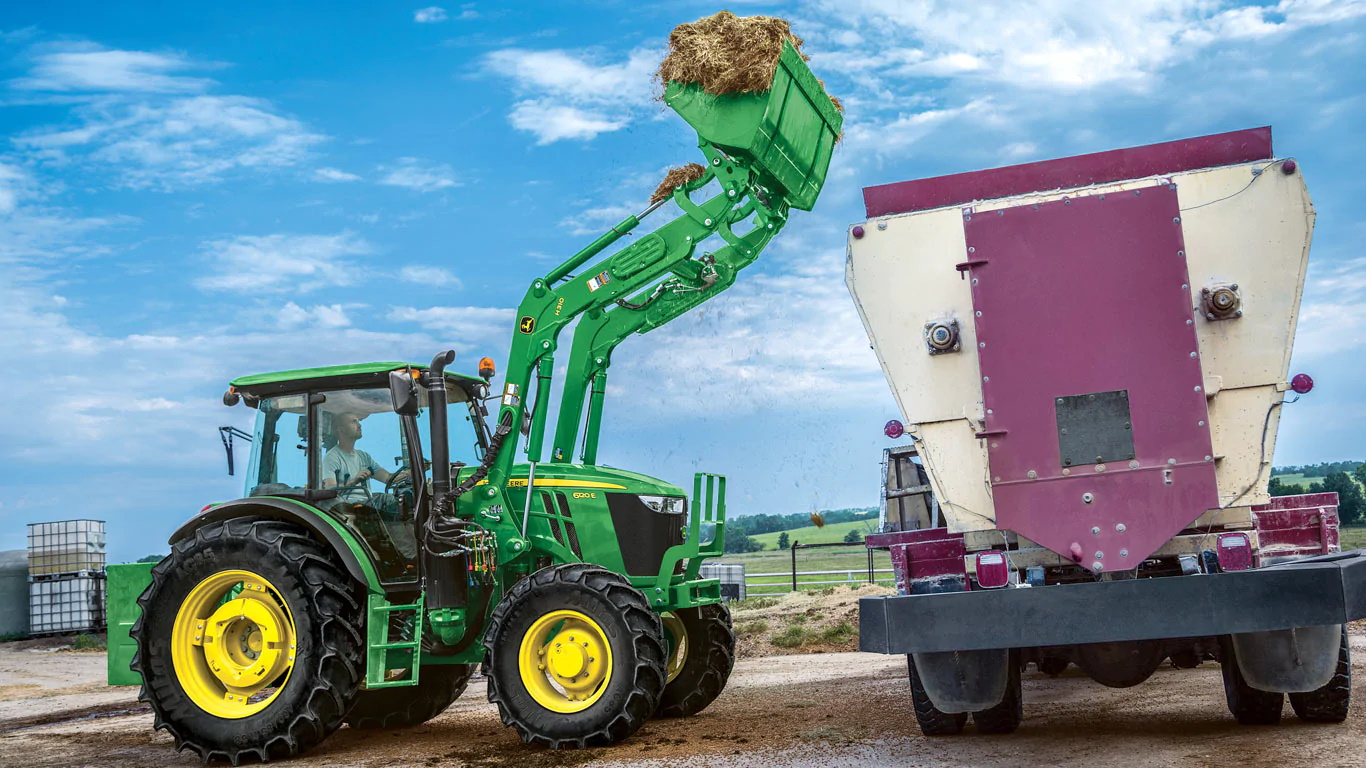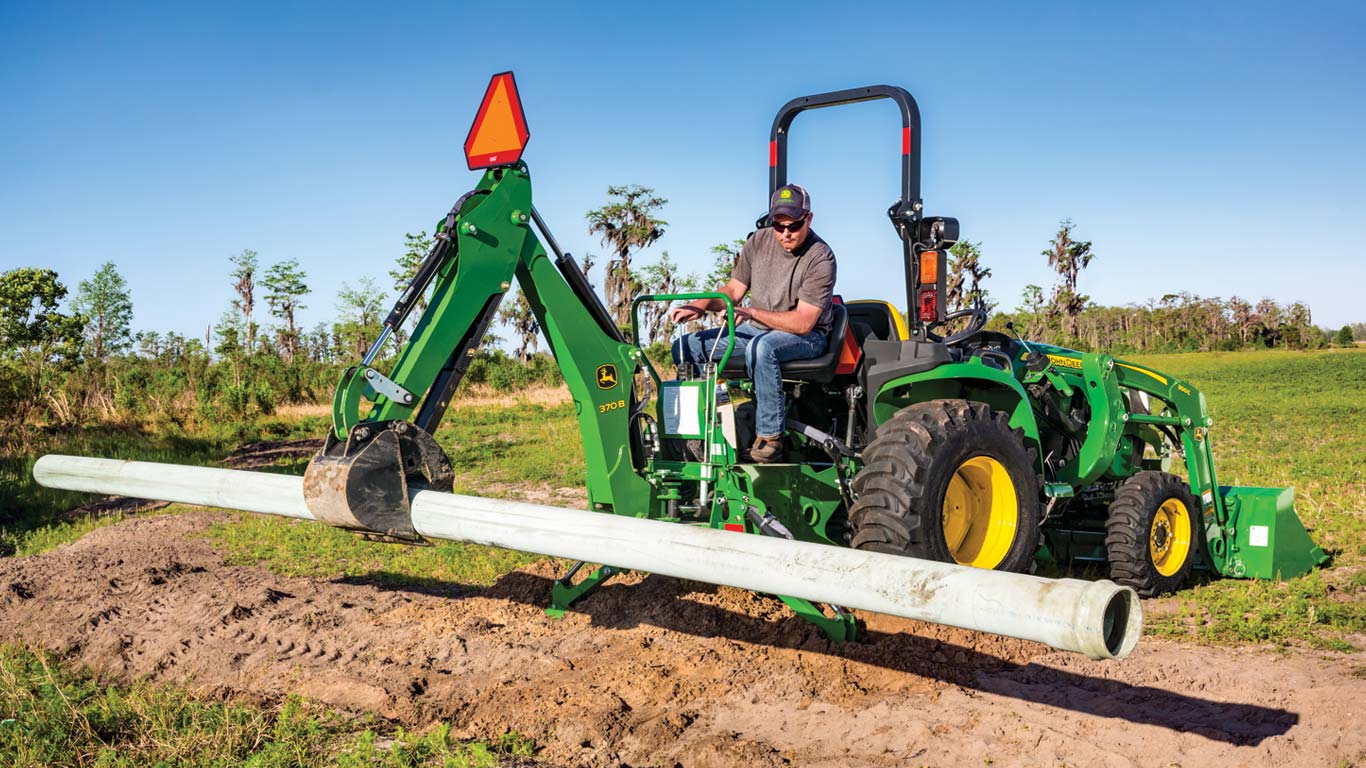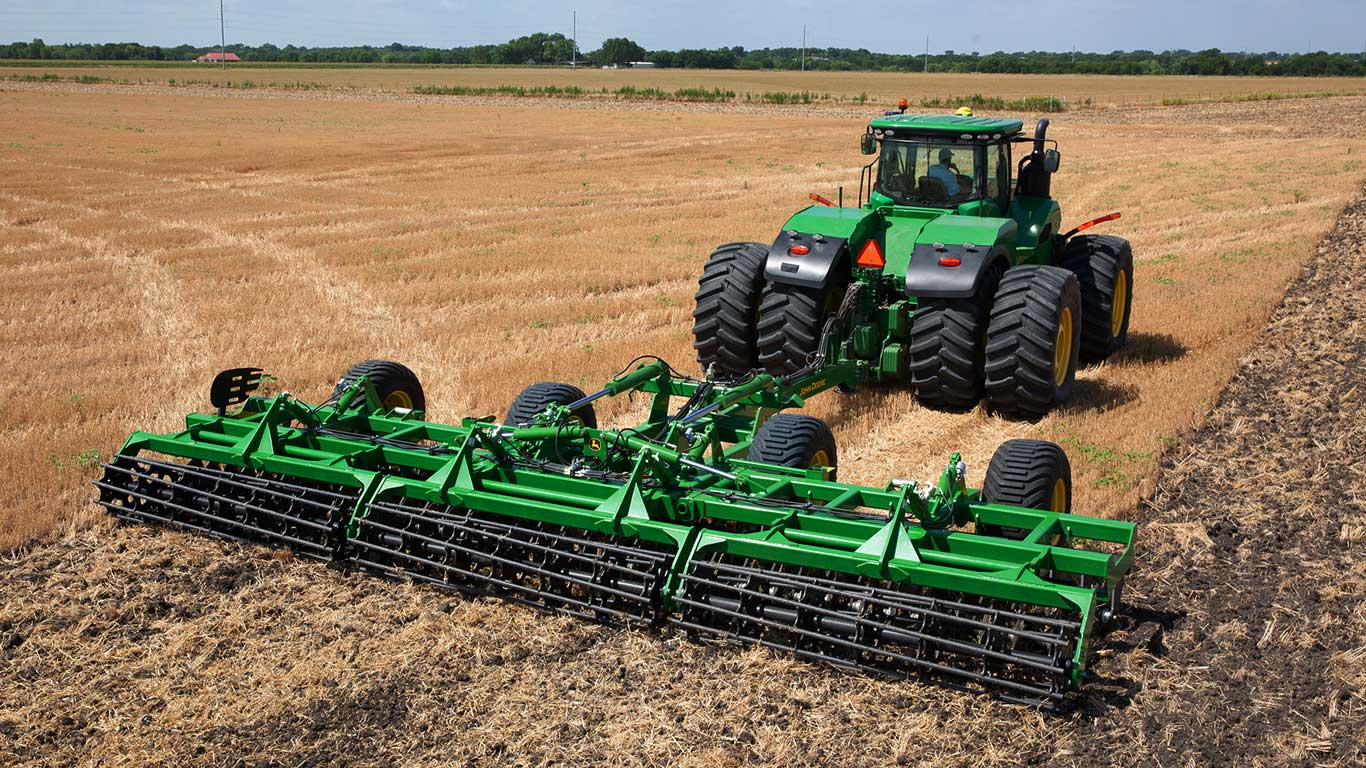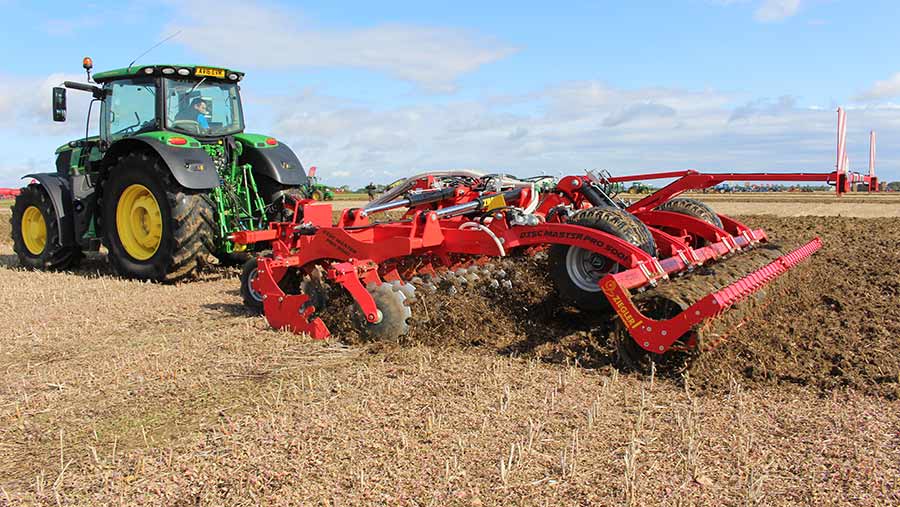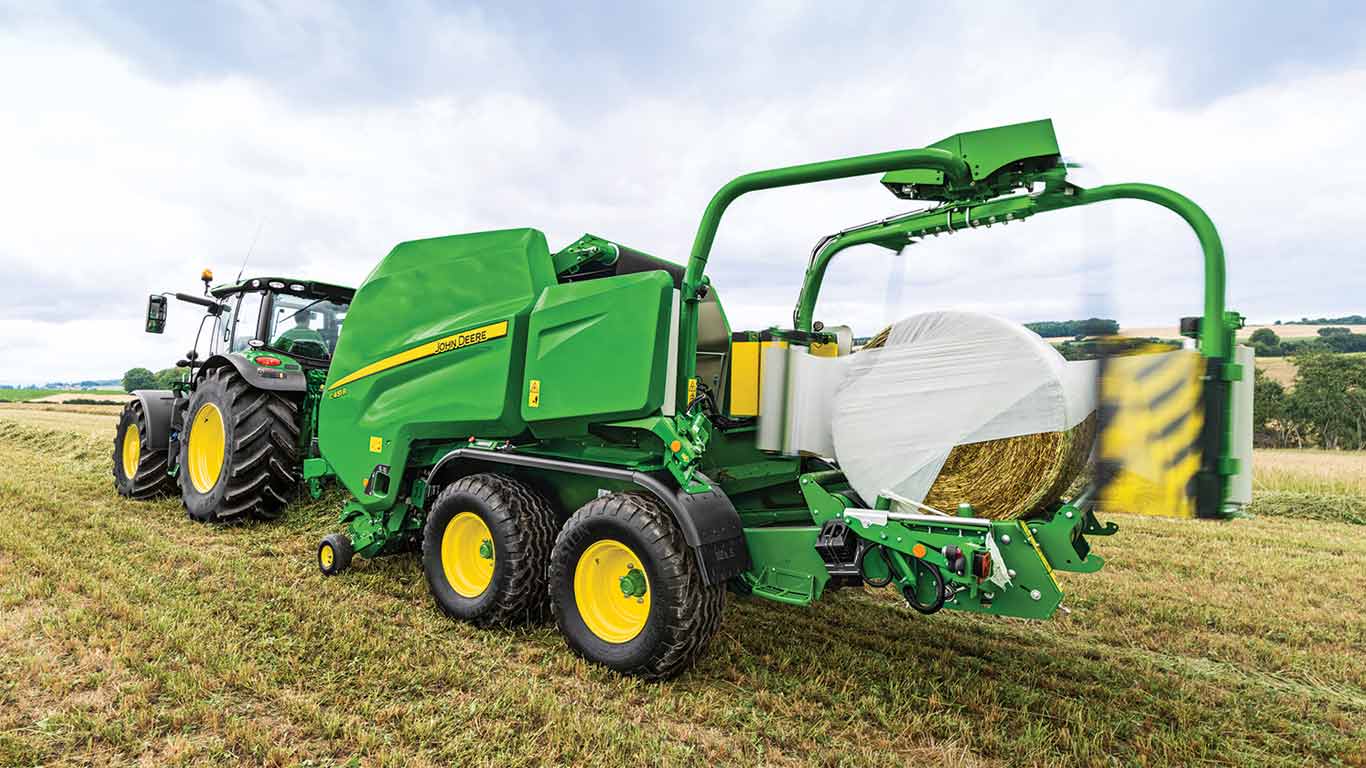Rakes are necessary pieces of farm equipment if you make hay. Wheel rakes, parallel-bar rakes, rotary rakes and belt rakes are pulled behind a tractor, and each have advantages and disadvantages, depending on the quality of the hay-cutting job, the moisture content of the hay and the equipment-storage area available to you.
Harrows
Harrows are pulled behind a tractor or ATV to level the soil surface, redistribute crop residue and disturb weed germination. You can attach a harrow to another implement that’s attached to your tractor to save time and expenses by making fewer passes through your field. Harrows are also handy for breaking up manure in the pasture and smoothing out riding-ring surfaces.
Front-End Loader
While backhoes look like fun, front-end loaders can be considered more useful on the small-scale farm on a regular basis. Not all tractors are equipped to handle a front-end loader, but if yours is, you can dig, move bulky items (including loose things such as soil and manure), lift heavy items and equipment, and perform some land-grading tasks.
Backhoe
If digging is your thing, a backhoe is your tool; if you don’t plan to dig holes on a regular basis, you’d be better served to borrow or rent a backhoe rather than purchase your own. Backhoes can be purchased as separate hydraulic implements for some tractor types. According to the Louisiana State University Ag Center, most backhoe attachments are designed to dig as deep as 10 feet.
Tractor
A tractor is a vehicle intended for drawing, towing, pushing or pulling something which cannot propel itself and, often, powering it too. In addition, tractor serves to deliver a high tractive effort (or torque) at slow speeds, for the purposes of hauling a trailer or machinery used in agriculture or construction. Tractors (one of which is pictured above) are available in sizes appropriate for farmers with 1 acre all the way up to those working 1,000 acres or more. You want one that has the right amount of horsepower and the right hitch rating for the work you plan to do with it.
Plows
There are more types of plows than you anyone cares to name. Select the right combination of plows for your farm based on your soil type, your type of crop production and the condition of the land.
Moldboard plows: These are most often used on land that has not been in crop production before or has been fallow for a long time. The large wings of the plow are designed to cut into and turn over all of the soil in an area.
Chisel Plow: This has long shanks that turn over the soil to a depth of 12 inches. Chisel plowing after applying a soil amendment can incorporate the amendment to 3 to 4 inches, and crop residues that are turned over during the plowing are concentrated in that soil depth, as well, according to Purdue University Cooperative Extension Service. Chisel plowing still leaves some crop residue on the soil surface and usually doesn’t create a seedbed that’s smooth enough to plant into—you need further soil prep for that.
Disk Plow: This cuts into the soil but doesn’t turn it over completely the way a moldboard plow would.
Machine
Farming is perhaps one of the world’s oldest and most necessary trades, and up until recently, it has continued on with the same tools. Modern engineering along with tractors and new machinery has shifted the farming industry to one of efficiency and mass production. Farming is no longer a small scale production, but rather one that takes place with massive machines over thousands of hectares. This efficiency boost means that the world has access to any food it wants at any time.
Cultivator
Cultivators are used for—you probably already guessed this—soil cultivation. In particular, cultivators are used for weed control before planting into a bed, as well as incorporating crop or weed residues and preparing a seed bed. Cultivator tines can be properly spaced to be used in a garden bed or crop field after plants are growing to remove the weeds from around the plants. It takes someone with a steady hand to drive the tractor in a straight line and not hit the vegetable plants with the cultivator.
Balers
Three general types of hay balers exist: round balers, square balers and large square balers. These are costly investments, and with all of their moving parts, they require maintenance, so it’s important to be confident that you’ll use your baler before you write your check.
Round balers pick up hay from the field and roll it into round bales, then wrap it with netting or twine.
Square balers are available in various sizes. The right square baler for your farm depends on how much acreage you bale. You can find balers that tie bales in twine, in wire or in both. A bale thrower is an add-on that makes stacking your bales on the wagon a whole lot easier.
Large square balers are designed for large farms. Unless you bale hundreds of acres, standard square bales or round bales are probably better options for you.


